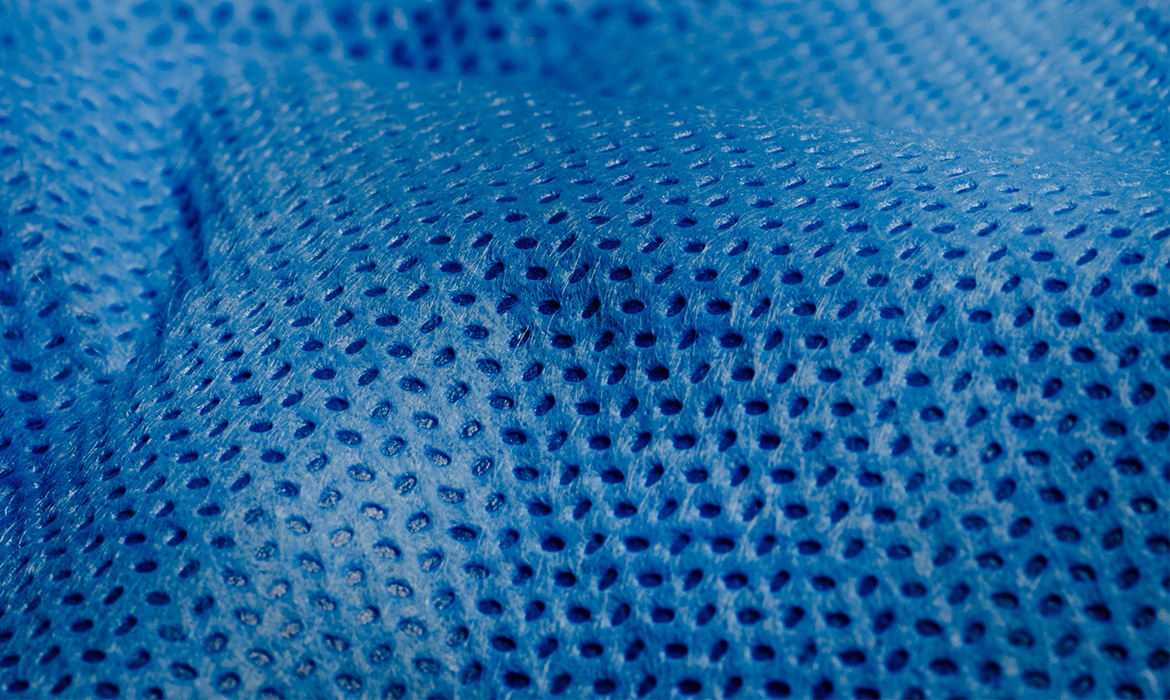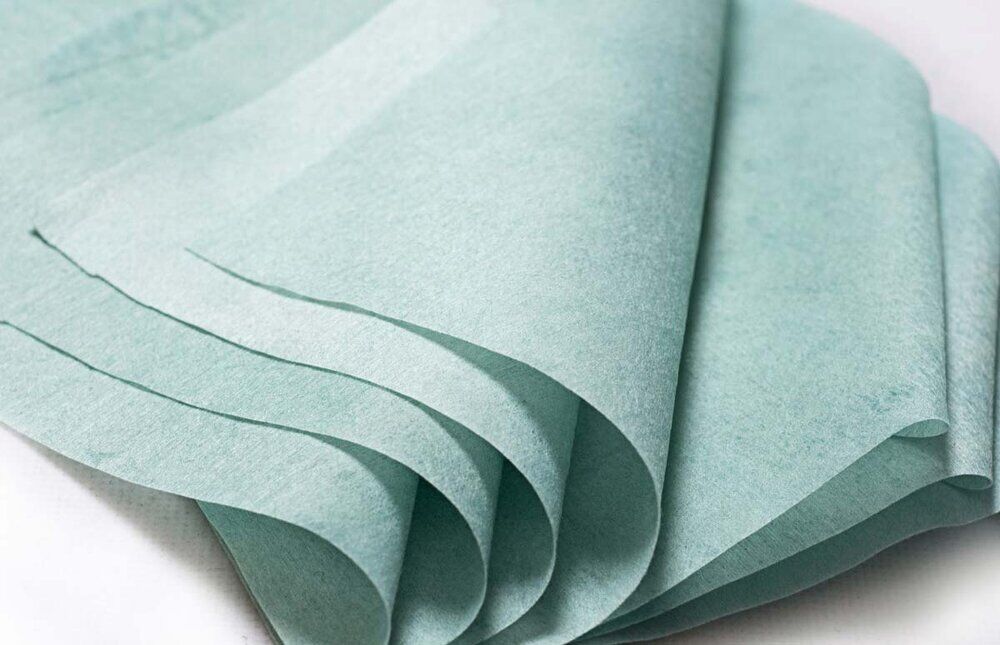
What is Nano Fabric?
The most recent

What is Geotextile?
9/20/2025Geotextile is a type of engineered fabric used in civil engineering projects. At HarirBaft Amir, we provide geotextiles at the best prices.

What is Agricultural...
9/12/2025Agricultural fabric is made from materials such as polypropylene or polyethylene and is manufactured using technologies like weaving or spunbond processes.

What is Nano Fabric?
8/20/2025Nano fabric, or nanofabric, is one of the key achievements of nanotechnology in the textile industry, revolutionizing our understanding of fabrics and their applications.
The most visited

Where to Buy Spunbon...
9/30/2023Spunbond fabrics belong to a category of non-woven textiles made from polypropylene. Unlike conventional fabrics constructed with warp and weft, spunbond materials

What is Spunbond
10/2/2023One of the most captivating, functional, and widely-used fabrics in the domestic market is the spunbond fabric. This fabric plays a significant role in the production of industrial products due to its unique characteristics.

Crafting Melt Blown ...
9/30/2023Melt blown textiles have emerged as one of the most sought-after materials, gaining prominence especially in the healthcare field
subscribe to newsletter

What is Nano Fabric?
8/20/2025
In today’s world, where technology is rapidly advancing, even seemingly simple things like fabrics have undergone remarkable transformations. One of the most fascinating innovations is the emergence of nano fabrics—textiles with unique properties that are now being applied across multiple industries. Just a few years ago, the idea of owning clothes that resist stains, eliminate odors, or even clean themselves seemed far-fetched. But now, thanks to nanotechnology, it has become a reality. The use of nanotechnology in textiles is not only an exciting achievement but also a new pathway toward greater comfort and quality of life. If you want to know exactly what nano fabric is and why it has become so popular, keep reading.
Everything About Nano Fabric
Nano fabric is one of the most important achievements of nanotechnology in the textile industry, transforming the way we think about clothing, fabrics, and even personal hygiene. But before exploring its impressive features and diverse applications, let’s first understand what nano fabric really is.
Nano fabric refers to textiles that have been enhanced during or after production using nanotechnology. Nanotechnology involves manipulating particles and structures at the nanometer scale (one-billionth of a meter) to change material properties at the molecular level. This allows textile manufacturers to add advanced features such as greater durability, UV resistance, or repellence against liquids and particles—without compromising softness, appearance, or comfort.
The fibers used in nano fabrics can be natural (such as cotton or silk) or synthetic (such as polyester or nylon). These fibers are either coated with nanoscale layers or infused with nanoparticles during fiber production. In both methods, the goal is to alter the surface structure at a microscopic level, creating fabrics that perform differently and more effectively than traditional ones.
Advantages of Nano Fabrics
To better understand nano fabrics and their unique potential, let’s take a look at some of their key advantages:
High Resistance to Stains and Contamination
One of the most notable benefits of nano fabrics is their ability to repel liquids and dirt. Their surfaces are engineered to be highly water- and oil-repellent, preventing stains from penetrating the fibers. As a result, spills can be easily removed with a simple wipe or shake. This feature is particularly useful for everyday clothing, tablecloths, or children’s wear.
Antibacterial and Antimicrobial Properties
Many nano fibers are coated with silver nanoparticles or other antibacterial agents. These inhibit the growth of bacteria, fungi, and microbes, preventing unpleasant odors and reducing skin irritation. This property is especially important for sportswear, underwear, bedding, and even medical masks.
Lightweight and Breathable
Contrary to the assumption that “advanced” fabrics may feel heavy or dense, nano fabrics are both lightweight and breathable. Their engineered structure allows the skin to stay cool and dry while maintaining durability and comfort.
Wrinkle and Shape Resistance
Nano fibers are designed to resist wrinkling and maintain their shape for longer periods. This is particularly beneficial for people with busy lifestyles who don’t have time to iron, ensuring that clothes stay neat even after long wear or travel.
Durability and Longer Lifespan
Thanks to the advanced technology used in their production, nano fabrics are more resistant to abrasion, frequent washing, and environmental conditions. This durability extends the life of garments and makes them a cost-effective choice in the long run.
UV Protection
Some nano fabrics are engineered to block or reflect harmful ultraviolet (UV) rays. This feature protects the skin from sun damage, making such fabrics ideal for summer clothing, curtains, or outdoor textiles.
Easy to Clean and Eco-Friendly
Because nano fabrics repel dirt and stains, they require less detergent and lower washing temperatures. This not only preserves the fabric’s color and texture but also makes it a more environmentally friendly option.
Applications of Nano Fabric
The most common applications of nano fabric include:
- Everyday and sportswear: Nano-based clothing resists dirt, prevents odors, and requires less frequent washing.
- Underwear and children’s clothing: Designed with antibacterial and hypoallergenic properties, making them ideal for sensitive skin.
- Home textiles (curtains, tablecloths, upholstery): Perfect for high-traffic areas where durability and cleanliness are essential.
- Hospitals and healthcare facilities: Lab coats, bed sheets, and curtains made from nano fabric reduce the risk of cross-contamination.
- Military and security industries: Nano fabrics enhance uniforms with resistance to environmental hazards, fire, or chemicals.
- Automotive and aerospace industries: Used in seats, interior coverings, and lightweight high-durability components.
- Special climate clothing: Fabrics engineered for temperature regulation, moisture control, and UV resistance are ideal for extreme environments.
Buying Guide for Nano Fabrics
Because of the wide variety and differences in quality, buying nano fabrics requires careful consideration. Here are some key tips to help you make the right choice:
- Consider the purpose: Identify whether the fabric is for clothing, household use, medical applications, etc. Each use requires specific properties.
- Check the base material: Nano fabrics can be made from natural or synthetic fibers. Choosing the right base ensures comfort and durability.
- Look for certifications: Genuine nano fabrics may come with health or durability certifications, which are indicators of quality.
- Test the fabric if possible: A quick test, such as sprinkling water to check repellency, can confirm its nano features.
- Buy from reputable manufacturers: Due to the importance of quality, purchase only from trusted companies. Harir Baft Amir is one of the well-known and reliable producers offering high-quality nano fabrics with guaranteed standards.
Start a conversation
Hello ! Click on a member below and chat.